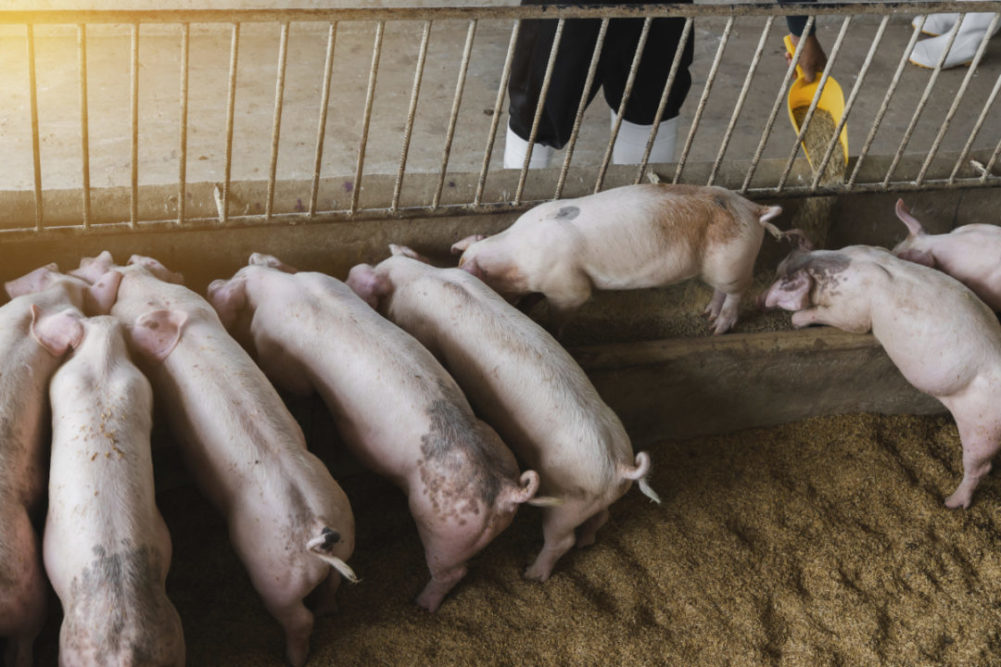NEW YORK – Industry inaction on California’s Proposition 12 raises the potential to disrupt markets for pork in 2022. But rather than react to a patchwork of conflicting animal welfare and sustainability guidelines, an analysis from Christine McCracken, senior analyst – animal protein at Rabobank, encourages the pork industry to take a proactive role in shaping animal welfare standards.
“In order to remain competitive, the industry needs to be prepared to offer practical solutions that align with consumer values and take an active role in the development of policies, regulations, and voluntary standards,” McCracken said in “US Pork Supply Chain Locked in Limbo as Producers Await Legal Ruling.”
While waiting for the courts to rule on Prop 12 challenges, some producers are trying to decide which standards to adopt. Massachusetts passed a less-restrictive animal welfare rule in 2016. But Proposition 12 establishes specific minimum requirements for confinement of laying hens, breeding pigs and veal calves. Beginning in 2022, sows will need a minimum of 24 square feet of usable space per animal.
Prop 12 also prohibits the sale in California of all products from animals not raised in compliance with the new rules, regardless of their origin. The legislation is limited to uncooked commodity pork such as cured, preserved or flavored. It does not include cooked products. Therefore, foodservice operators that utilize large quantities of cooked pork products should be largely unaffected by the rule, Rabobank noted.
In February, the North American Meat Institute (NAMI) petitioned the US Supreme Court to review an earlier ruling by the US Court of Appeals for the Ninth Circuit against NAMI’s challenge to the constitutionality of Proposition 12. The National Pork Producers Council and the American Farm Bureau Federation also have challenged the rule in federal court.
Pork producers are reluctant to make costly investments needed to comply with Prop 12 in the absence of long-term premium guarantees. Rabobank estimates that at least 15% of US hog producers would need to convert to larger barns to comply with new production mandates. Producers are likely to build new barns to maintain production levels. Costs of new barn construction will vary among producers, but permits and land availability are cost drivers, McCracken said.
“An average barn might cost $1,600 to USD 2,500 per sow, or $3 million to $4.5m million in total,” she said in the report. “Some Proposition 12-compliant barns are averaging as much as $3,400 per sow. the decision is made even harder by elevated building costs due to COVID and a short of lumber (costs currently up +129% since October 2020). Producers that have not already moved to group housing or only recently converted their operations could find conversion costs prohibitive.”
With no certainty of a legal victory, the stakes are high in this battle. Rabobank expects a shortfall in compliant pork supplies to initially lead to sharply higher pork prices in California.
“Rabobank estimates that, based on current sow housing and barns expected to convert, US producers would be able to provide only 40% to 50% of California’s compliant pork needs, or 100 million to 110 million lbs per month in 2022,” the report stated. “This would result in a short-term surplus of 150 million lbs per month of non-compliant pork on the rest of the US market per month, or an estimated 10% of total monthly US volume consumed (excluding California).”
Another consequence of industry inaction is more consolidation. McCracken said, “With time running out and some customers asking for guarantees, however, packer processors may have no option but to offer long-term financial incentives to suppliers. This shift works to the benefit of integrated suppliers and will likely force greater concentration within the industry — one of the very outcomes some US lawmakers have been working to avoid.”
The US pork industry could model its efforts on those of the US Roundtable for Sustainable Beef (USRSB). USRB proactively brought stakeholders together to develop the US Beef Industry Sustainability Framework which are guidelines for industry to implement socially responsible and sustainable beef production practices. The framework identifies six high-priority indicators along with sector-specific metrics and sustainability assessment guides.
“Similar initiatives by the United Egg Producers to establish a uniform cage-free standard is yet another example of industry leaders proactively working to establish acceptable production standards in order to avoid costly, and often conflicting, statewide regulations,” the report said.
McCracken concluded, “By leading the discussion and rulemaking the industry has the opportunity to shape animal welfare standards and take an active role in their development creating sustainable national animal welfare policies that are both economically viable and good for the animals. However, the industry needs to better align on standards and play an active role in establishing the legal doctrine.”




